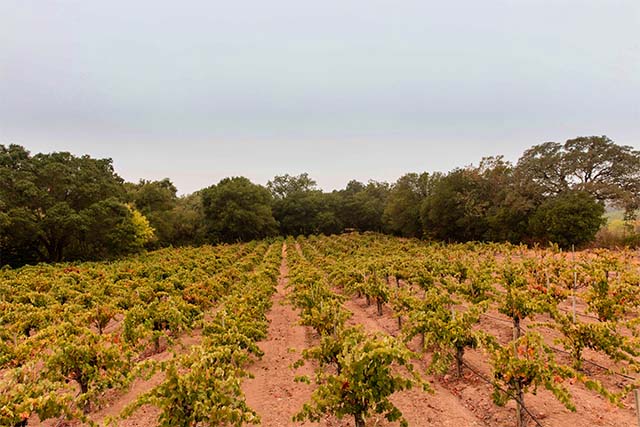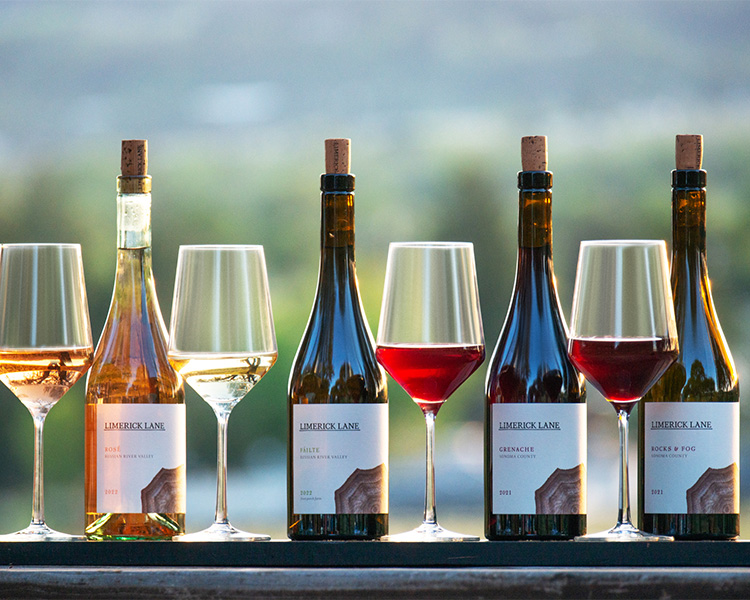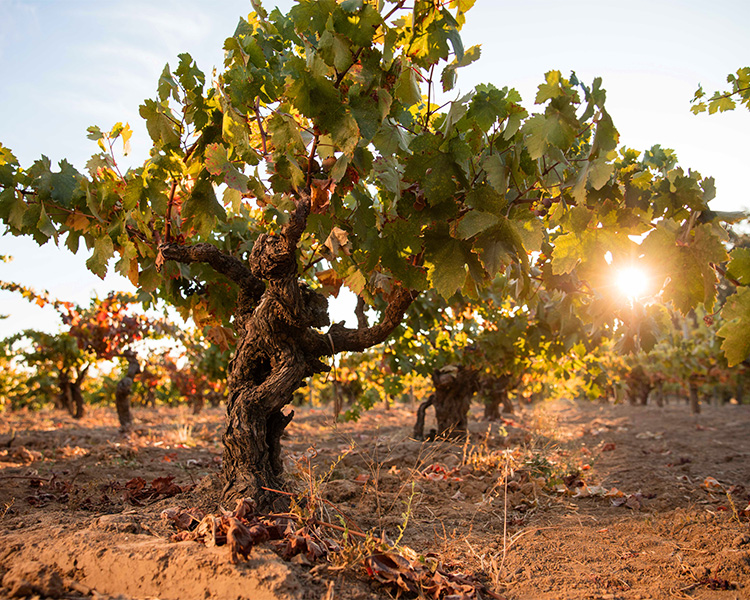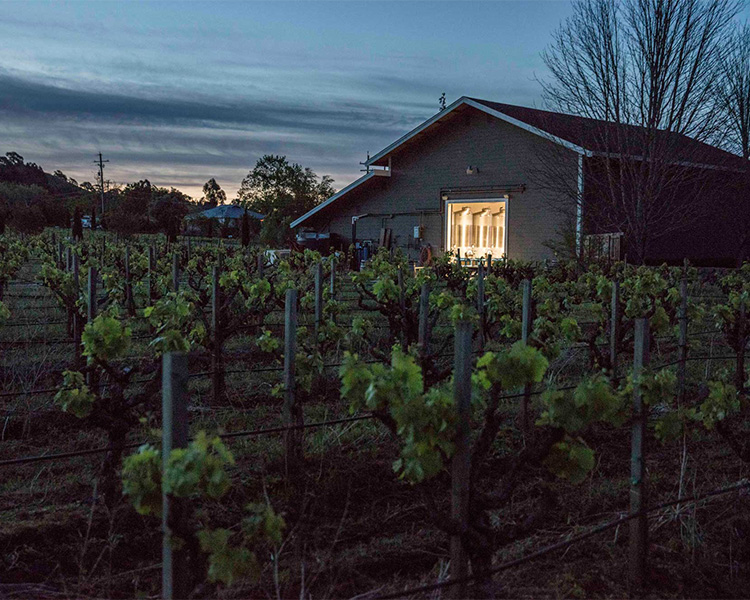Common Wine Myths
Ah, summer!
Now that we’re past bud break, and the 2022 vintage is setting on the vine, we thought we’d share a few insights on certain wine myths referenced from time to time by guests who visit us here at Limerick Lane.
Myth 1: You can always tell red from white or rosé.
Myth 2: Red wines have higher sulfite levels than whites or rosés.

OK, yes, tasted the usual way–see, smell, swirl, sip, spit–it would be pretty hard to miss the difference between a cab and a chardonnay or rosé. Color and serving temperature alone place them near opposite ends of the spectrum. But it’s not nearly as easy to discern red wines from “clear” wines when limited to smell, sip, and spit. The higher tannin level in red wines–which creates the tongue-drying finish that softens over time—might offer a clue…but whites and rosés generally have higher sulfite levels than reds. Both compounds occur naturally (tannins in the grape skins and seeds; sulfites as a byproduct of fermentation) and act as preservatives. Veteran tasters have been fooled between red and white when presented with wines (and labels) they cannot see. Reidel created pure black crystal glasses to blind-test sommeliers’ palates. We like to think that all of our wines are pretty distinctive…but if you visit while our Rosé is on the list, close your eyes and try the test on your own!
Myth 3: White Zinfandel and “red” Zinfandel are made from different grapes.

Nope. Zinfandel is a black grape (traditionally, grape varietals are classified as “black” rather than “red”) used to make the two different styles of wine. Zinfandels are deep, robust reds. White zins (as they’re often known) are generally off-dry, comparatively low-alcohol pink wines. The grape is the same; the difference comes at the growing, harvesting, and winemaking stages. At Limerick Lane, our Zinfandel list includes wines made from vines a century old. These grizzled, head-pruned old-timers set a limited crop, but the quality is supreme. Because white.Zinfandel can be made from heavily-cropped vines, these grapes are often grown on trellises and harvested earlier than those for red wines, which allows for lower alcohol and brighter acidity to balance the sweetness. White zin differs from our Rosé and those grown for centuries in Provence in that our Rosé is not a saigneé (or “bleed”) from fermenting red juice, but is made instead from grapes that are grown, harvested and vinified specifically to become Limerick Lane Rosé. Join us for an Outdoor Seated Tasting. Bandol hillsides have nothing on ours!
Myth 4: Is that cinnamon I taste…?

There are no stupid questions about wine, but if you’d feel more comfortable asking from the comfort of your home if that cinnamon you taste was added to the wine (it wasn’t), or if you’d like a deeper delve into the different spice flavors imparted by oak barrels (bingo), consider joining us for a Limerick Lane Remote Video Tasting. We know it isn’t possible for everyone to visit us. We’d still love to meet you! Come alone, gather a group…an expert member of our team will guide you through an intimate 45-minute video tasting tailored to your preferences and interests.
Finally, there’s something profound and elemental about tasting wines surrounded by the barrels in which they aged, while walking among the vines on which they grew. If you can spend a little more time with us during your visit, we’ll introduce you to those grizzled, head-pruned old-timers, explain why some have “comb-overs” and others are left to sprawl. Limerick Lane’s fascinating history comes to life—literally—just outside our door. On our Seasonal Estate Tour and Tasting, we explore our wines from the unique perspective, and singular magic, of this exceptional small estate.


